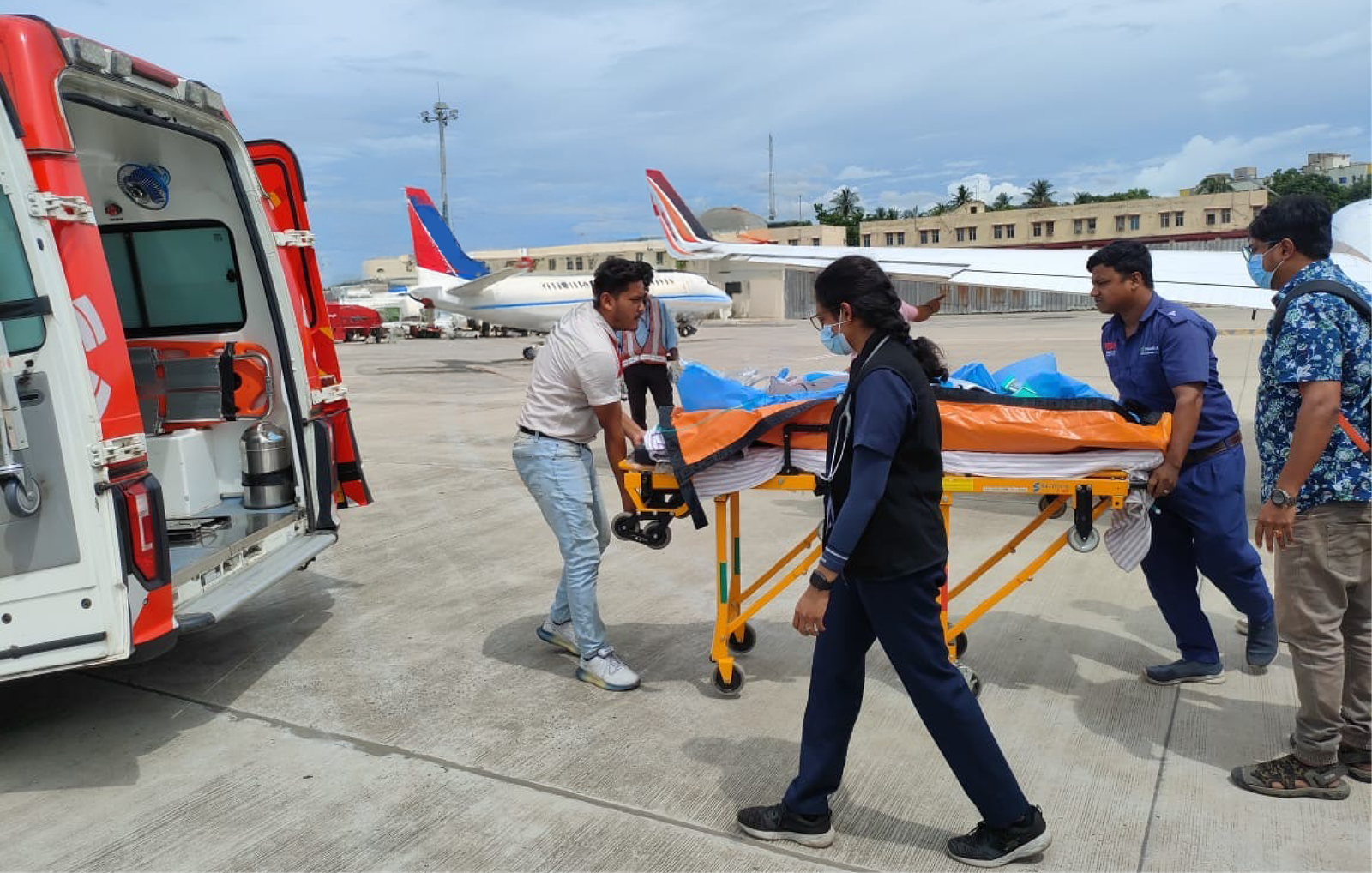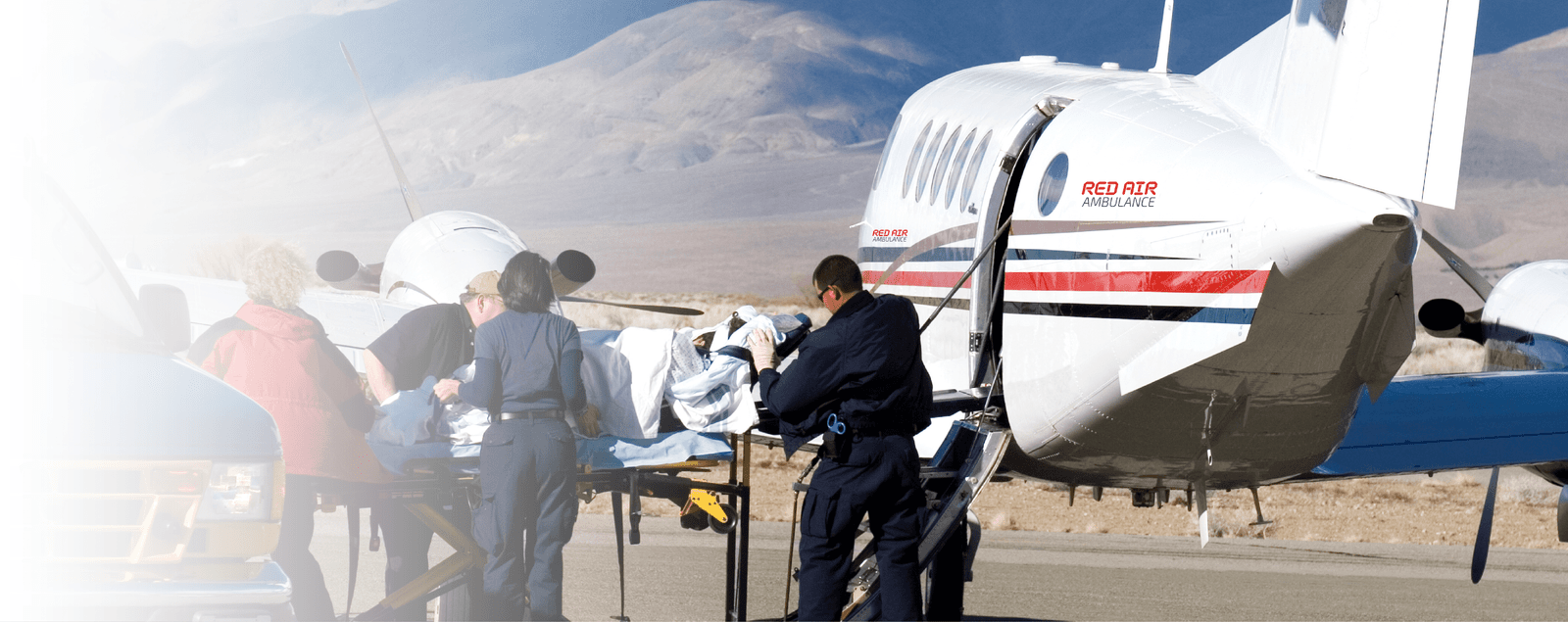The role of an air ambulance medical team is vital in providing life-saving care during long-distance patient transfers. While the advanced equipment and specialized aircraft are essential, it is the highly trained medical professionals onboard who ensure the success of these missions. At RED Air Ambulance, we take pride in our medical team’s expertise and commitment to delivering exceptional care to patients during air ambulance services.
This blog takes you behind the scenes to explore the rigorous training, preparation, and expertise that make the medical teams at RED Air Ambulance some of the best in the industry.
The Role of the Air Ambulance Medical Team
Air ambulances are not just about speed—they are flying ICUs equipped to handle critical medical conditions. The air ambulance medical team is responsible for maintaining the patient’s stability and ensuring their safety throughout the journey. This involves:
- Monitoring vital signs continuously.
- Managing life-support systems and specialized equipment.
- Administering medications and emergency interventions as needed.
- Coordinating with hospitals for seamless patient handovers.
Unlike traditional ground ambulances, air ambulance teams operate in high-pressure environments, often over long distances. The challenges of altitude, limited space, and the need for advanced medical knowledge make their role incredibly demanding and specialized.
Rigorous Training for Air Ambulance Professionals
The medical professionals at RED Air Ambulance undergo comprehensive training to ensure they are prepared for the complexities of emergency air transport. Here are the key aspects of their training:
1. Advanced Medical Certifications
Air ambulance professionals hold certifications beyond standard healthcare qualifications. These include:
- Advanced Cardiac Life Support (ACLS) certification.
- Pediatric Advanced Life Support (PALS) certification for handling young patients.
- Trauma Life Support training for managing severe injuries.
- These certifications equip them to provide critical care in diverse scenarios.
2. Simulation-Based Training
To prepare for real-life scenarios, medical teams participate in simulation exercises that mimic in-flight conditions. These simulations include managing medical emergencies at altitude, using equipment in confined spaces, and practicing rapid decision-making under pressure.
3. Aviation Medicine Knowledge
Understanding how altitude and air pressure affect the human body is crucial. Air ambulance professionals are trained in aviation medicine to address complications such as hypoxia (low oxygen levels) and barometric pressure changes that can impact patient care during flights.
4. Coordination and Communication Skills
Air ambulance missions require seamless communication between medical teams, pilots, and ground staff. Training focuses on fostering clear and effective communication to ensure the patient’s safety at every stage of the journey.
Expertise in Managing Diverse Medical Scenarios
The air ambulance medical team is equipped to handle a wide range of medical situations. Their expertise includes:
1. Critical Care Patients
Patients requiring ventilator support, cardiac monitoring, or intensive care benefit from the team’s advanced training and use of state-of-the-art equipment onboard.
2. Pediatric and Neonatal Transfers
Transferring young patients involves unique challenges. The team is skilled in handling sensitive cases, ensuring that even the tiniest patients receive expert care during the journey.
3. Trauma Cases
In the case of trauma, quick interventions can make all the difference. The medical team is trained to stabilize patients and manage complex injuries until they reach a specialized medical facility.
4. Long-Distance Patient Transfers
Long flights require meticulous planning and care to maintain patient stability. Our medical team expertise at providing continuous care over extended periods.
Seamless Coordination for Effective Air Ambulance Services
A successful emergency air transport mission relies on seamless coordination between multiple teams. At RED Air Ambulance, the process is carefully structured to ensure every detail is addressed:
1. Pre-Flight Preparations
The process begins with detailed planning. This includes assessing the patient’s condition, assembling the required medical equipment, and ensuring the readiness of two ground ambulances—one to transport the patient to the air ambulance and another to their destination.
2. In-Flight Care
During the flight, the medical team tirelessly monitors the patient’s condition and manages any complications. The onboard environment is equipped to provide ICU-level care.
3. Post-Flight Handover
Upon arrival, the team ensures a smooth transition to the destination hospital and provides a comprehensive handover to the receiving medical team.
Advantages of RED Air Ambulance’s Medical Team
1. Specialized Expertise
The professionals at RED possess advanced medical knowledge and hands-on experience, ensuring patients receive exceptional care during long-distance transfers.
2. Access to Cutting-Edge Equipment
The team operates in a fully equipped environment with life-support systems, cardiac monitors, and ventilators. This allows them to handle even the most critical conditions.
3. Patient-Centric Approach
Every patient is treated with care and compassion. The team’s focus is not only on medical stability but also on ensuring the patient’s comfort and peace of mind throughout the journey.
4. Reliable Communication
The team communicates constantly with ground staff, pilots, and receiving hospitals, ensuring a seamless transfer experience.
Challenges Faced by Air Ambulance Professionals
1. Operating in Confined Spaces
Air ambulances have limited space compared to ground ambulances, making medical procedures challenging. However, the team’s training prepares them to adapt and work efficiently in these conditions.
2. Altitude-Related Medical Issues
Altitude can affect both patients and medical equipment. Professionals are trained to anticipate and manage these challenges, ensuring patient safety at all times.
3. Time-Sensitive Situations
The team must act quickly while maintaining precision. Their ability to think and perform under pressure is a testament to their dedication and expertise.
Why Choose RED Air Ambulance?
When it comes to air ambulance services, the skill and experience of the medical team are just as important as the aircraft itself. Moreover, we pride ourselves on having some of the most qualified and compassionate professionals in the field.
Our medical team’s training, expertise, and commitment to patient care set us apart. By choosing us, you can be confident that every aspect of your journey will be handled with the utmost care and professionalism.
Conclusion
Behind every successful air ambulance mission is a team of highly skilled and dedicated medical professionals. From rigorous training to hands-on expertise, the air ambulance medical team at RED Air Ambulance works tirelessly to ensure patient safety and comfort during long-distance transfers.
If you’re seeking reliable and expert air ambulance services, look no further than RED. Contact us today to learn more about our services and experience the care and expertise that set us apart. Your journey to better health begins with a team you can trust.
Frequently Asked Questions (FAQs)
1. What qualifications do Red Air Ambulance medical teams have?
Our medical teams hold advanced certifications like ACLS, PALS, and trauma life support. They’re trained to handle complex cases with the same precision and care you’d find in a top-tier ICU.
2. How are Red Air Ambulance staff trained for in-flight care?
They undergo simulation-based training that mimics real in-flight emergencies. This includes medical procedures in tight spaces, high-pressure decision-making, and managing patient care at altitude.
3. What medical conditions can the team handle during flights?
From critical care and trauma cases to pediatric and neonatal transfers, our team manages a range of conditions using specialized equipment and years of hands-on experience.
4. How does Red Air Ambulance ensure seamless coordination?
Every mission includes detailed pre-flight planning, dual ground ambulance support, and real-time communication with hospitals for smooth patient handovers and continuity of care.
5. What makes Red’s medical team stand out?
It’s their expertise, compassion, and commitment. They combine top-tier training with a patient-first approach, ensuring comfort, safety, and reliable care throughout every flight.


 18001207004
18001207004
 February 5, 2025
February 5, 2025 Red Health
Red Health
